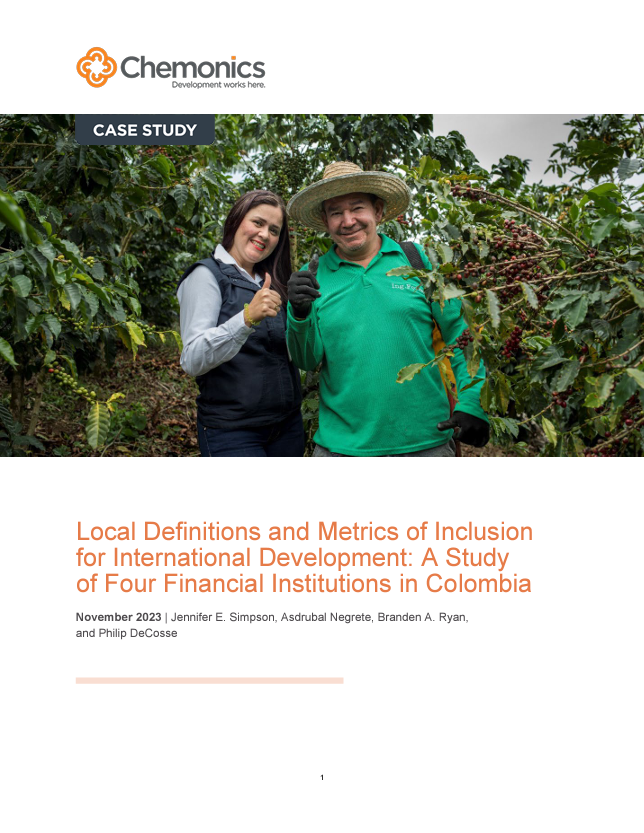Unlocking Inclusion in Colombia: How Local Definitions and Metrics Shape Success
By enabling local partners to define, measure, and track what success looks like for them, the USAID Rural Finance Initiative (RFI) helped support greater financial inclusion in Colombia. RFI, implemented by Chemonics between 2017-2022, worked with local financial institutions in Colombia to expand financial inclusion for Venezuelan migrants in urban areas and for Colombians in rural areas.
In a recent study, we interviewed 17 key informants from four Colombian financial institutions that worked with RFI to assess how they define and measure financial and social inclusion. A few key themes emerged from this:
- Local Definitions of Financial Inclusion. Informants confidently described the elements of what financial inclusion entails in practice. Informants said that financial inclusion implies formal participation in the financial system through products or services offered, including savings and lending, financial education, and/or business training. Informants also said financial inclusion means providing clients with real opportunities to improve their lives. “Inclusion has two important components, one is the possibility of improving the quality of life, another is to accompany you, apart from bringing you to a different level economically and socially, it continues to strengthen you,” noted one of the informants.
Local Definitions of Social Inclusion. There was less agreement among informants on the definition of “social inclusion” than on financial inclusion. Despite this, two themes arose: social inclusion involves treating all potential clients equally, and it also means working in the client’s best interest. “[Social Inclusion is] to be able to have uniform treatment … that regardless of the type of formalization, regardless even of patrimonial and liquidity issues, we can provide people a product that suits them; and that regardless of creed or political position, our product is the same,” said one informant.
- Success should be measured in alignment with local definitions. Financial institutions use various metrics to measure and track financial inclusion, primarily focusing on participation in the financial system, but there is no universally accepted metric or index. They find it easier to track financial inclusion compared to social inclusion due to clearer definitions. Metrics for social inclusion often revolve around measuring the institution's impact on the community. Defining social inclusion could help institutions develop more effective tracking metrics. Development actors can assist financial institutions in capacity strengthening and defining and measuring social inclusion. As one informant stated, “We have financial inclusion metrics, but social inclusion is something very complex [and] its measurement is not easy.”
This study demonstrates that inclusive programming must go beyond standard donor indicators tracking the number of women, youth, or other targeted groups who participate or benefit from a program. Development practitioners need to seek out and understand localized definitions of inclusion, facilitate local partner definitions where they are absent yet desired, co-design programming in alignment with those definitions, and develop and track specific metrics aligned with those definitions to assess inclusive development over time.
To learn more, read the case study.




